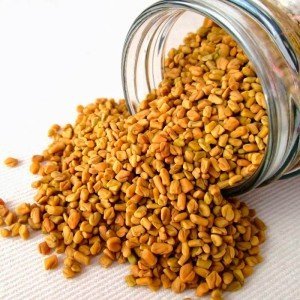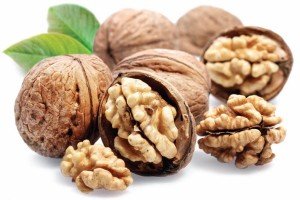 It’s quite normal to worry about your milk supply when you start breastfeeding your baby.You may be wondering if your body is producing enough milk to meet your baby’s growing needs or if there is anything else you can do to boost your milk supply.
It’s quite normal to worry about your milk supply when you start breastfeeding your baby.You may be wondering if your body is producing enough milk to meet your baby’s growing needs or if there is anything else you can do to boost your milk supply.
Certain foods are popularly believed to increase the supply of breastmilk and some are even backed by research. However, do consult your doctor before taking any herbal drinks or preparations or making any changes to your diet. And as with all herbs or natural remedies, moderation is key.
Contents
- The first method. Nurse your baby often
- The second method. Use the pumping technique
- The third method. Cut off using pacifiers and bottles
- The fourth method. Avoid stresses
- The fifth method. Breast massage for stimulating milk supply
- The sixth method. Use hand expression for more milk
- The seventh method. Build up the proper diet for breastfeeding
- Video
The first method. Nurse your baby often
 Breasts work on demand. The more your little one nurses, the more milk your body will create. When your little one is going through a growth spurt, it’s easy to fall into thinking, “my baby is so hungry I must not have enough milk.” What’s really happening is your baby is priming your body to have enough milk to support how big your baby will be after the spurt.
Breasts work on demand. The more your little one nurses, the more milk your body will create. When your little one is going through a growth spurt, it’s easy to fall into thinking, “my baby is so hungry I must not have enough milk.” What’s really happening is your baby is priming your body to have enough milk to support how big your baby will be after the spurt.
Allow your baby to nurse frequently for as long as he wants. The more often your breasts are stimulated, the more milk your body makes. At least 8 feedings in a 24-hour period is ideal, more if possible. If you normally feed on a set schedule, allow the baby to feed on demand to increase your breast milk production.
The worst thing for your supply is to supplement with formula during a growth spurt. It can be hard to devote most of your day to nursing, but it’s the best thing for your baby, and your supply.
The second method. Use the pumping technique
Pumping is beneficial for two reasons:
 First, pumping allows you to store breast milk when your baby doesn’t need it, allowing you amass and store more expressed milk.
First, pumping allows you to store breast milk when your baby doesn’t need it, allowing you amass and store more expressed milk.- Second, pumping stimulates the production of more breast milk. Invest in a high-quality pump.
Pumping isn’t exactly the spice of life, so it pays to invest in one that works well. You can rent a hospital-grade pump if you don’t own a high-quality, double pump.
Whether you are at work or at home, consider pumping for fifteen minutes every couple of hours. Either that, or pump from five to ten minutes after nursing. Pumping at least eight times during a twenty four-hour period will help to quickly increase breast milk production. If you can’t pump immediately after nursing, try to pump halfway in between feedings. Pump both breasts at the same time.
Advice:
Pumping both breasts will give you twice as much breast milk twice as fast in addition to helping stimulate more production.
The third method. Cut off using pacifiers and bottles
 This makes sure all your baby’s sucking needs are met at the breast. As the baby gets older, it will be easier for him to go back and forth from breast to pacifier without you losing important breast stimulation.
This makes sure all your baby’s sucking needs are met at the breast. As the baby gets older, it will be easier for him to go back and forth from breast to pacifier without you losing important breast stimulation.
Advice:
If you are using bottles for supplementing, try to replace those with a syringe or spoon.
The fourth method. Avoid stresses
Loads of stress can hurt your ability to produce milk. Try to relax before pumping or breastfeeding by playing soothing music, looking at pictures that produce happiness, or just having a moment with the love of your life.
Advice:
If you want to, try putting warm compresses on your breasts or massaging them for a short period right before you intend to pump or breastfeed.
The fifth method. Breast massage for stimulating milk supply
 Massaging your breasts will clear the milk ducts and cause the milk to flow more freely, which will help empty the breasts and therefore trigger a higher milk production. Breast massage is not just for those mothers wanting to increase their milk supply. It is also an important area of breast health that is neglected due to the image that society has created about “touching yourself”. Your breasts do not get exercise or stimulation, and as a result you will have a fluid buildup, which can lead to breast problems.
Massaging your breasts will clear the milk ducts and cause the milk to flow more freely, which will help empty the breasts and therefore trigger a higher milk production. Breast massage is not just for those mothers wanting to increase their milk supply. It is also an important area of breast health that is neglected due to the image that society has created about “touching yourself”. Your breasts do not get exercise or stimulation, and as a result you will have a fluid buildup, which can lead to breast problems.
Benefits of breast massage:
- An increase in blood circulation within the breast.
- You can decrease the symptoms of menstrual cramps.
- Help with pain from surgery.
- Reduce discomfort during pregnancy.
- Improve your skin tone.
- Increase breast milk production.
- It can help for relief of engorgement.
- Unblock plugged milk glands.
- Massage breasts for relaxation.
- Toning of the muscles in your breasts.
- Breast firmness and increasing its overall attractiveness.
- Helps for drainage during breastfeeding.
- Breast cancer prevention.
- Lymphatic drainage is improved, which can actually prevent cancer by removing unwanted toxins.
- Breast self-examination: self exam improves awareness of any breast lumps or bumps.
- Decreased appearance of scars and stretch marks.
- Natural breast enlargement and enhancement: Some women massage to stimulate breast growth, resulting in a larger cup size.
Here are some tips about breast massage you should know:
- The best massage technique: first start pumping the lymph glands in your armpits. This lymphatic massage will get the blood and toxins flowing.
- Use a lotion whilst massaging: a natural lotion if you are breastfeeding. Coconut and/or olive oil is natural and safe to use. Gentle rubbing and/or squeezing is enough to get the blood flowing.
- Do not press too hard, or you could damage your glandular tissue. The rule of thumb is that it should not be painful.
- When you feel your breasts warming up, it’s a good sign, this indicates that the blood flow in your breasts has increased.
Advice:
- These massages should be done daily.
- You can massage your breasts every time you have a bath, you can use soap as a lubricant. This way you won’t forget and you will be more relaxed during a massage.
Back
The sixth method. Use hand expression for more milk
Why do you need to perform hand expression:
 To express breast milk a little if your breasts are too full.
To express breast milk a little if your breasts are too full.- To temp your baby onto the breast. Some milk can be hand expressed and placed on your nipple or on Baby’s lips.
- Hand expression is more comfortable for some moms, compared to pumping.
- Some moms cannot afford a breast pump.
- Being away from your baby for a few hours.
- To relieve engorged breasts, blocked milk ducts or other breastfeeding problems.
- If Mom’s nipples are sore and she wants to take a few hours break from breastfeeding.
- To stimulate milk production.
Advice:
When expressing milk by hand, remember practice makes perfect.
The seventh method. Build up the proper diet for breastfeeding
1. Fenugreek seeds
 Fenugreek seeds have been used for ages to increase breastmilk supply and now there is research to back this ancient belief. Research has shown that fenugreek or fenugreek increases milk supply. Some doctors say that if you include fenugreek in your diet, you will have an increased supply of milk within a week. Besides, fenugreek seeds are a great source of iron, calcium, vitamins and minerals.
Fenugreek seeds have been used for ages to increase breastmilk supply and now there is research to back this ancient belief. Research has shown that fenugreek or fenugreek increases milk supply. Some doctors say that if you include fenugreek in your diet, you will have an increased supply of milk within a week. Besides, fenugreek seeds are a great source of iron, calcium, vitamins and minerals.
But be careful not to consume too much as it is a mild dieuretic and you may end up losing a lot of water. Fenugreek tea is a popular drink given to new mothers. Fenugreek is can be added to many dishes, especially vegetables, and meat dishes.
2. Fennel seeds
Studies have found that fennel seeds increase milk supply. Some doctors also say that fennel seeds help prevent colic in your baby. They are rich in vitamin C. Besides, they are a good mouth freshener and aid digestion. Fennel seeds can be added to vegetables, rice preparations and desserts. In many traditional homes fennel water and fennel tea are given regularly to new mothers.
3. Garlic
Among its many curative properties, garlic is said to help in increasing breastmilk supply. Studies have shown that the infants of mothers who eat garlic tend to feed for a longer time, and many babies seem to like the flavour in breastmilk. Though garlic can be eaten on its own, you may find it more appetising when used as a condiment in meats, vegetables, pastas and pickles. Garlic milk is a popular traditional post-delivery drink given to nursing mums.
4. Water
Drink from ten to twelve glasses of water – breastmilk is liquid after all so you need the regular intake of fluids to produce it. A good way to keep up your liquid intake is to drink a glass of water every time you feel thirsty. Like most breastfeeding mums, you will soon find that you get thirsty with every feeding session. This is because as you feed, your body secretes a hormone that makes you thirsty.
5. Oatmeal
Oatmeal is fantastic for building and maintaining your milk supply. Whether you enjoy a hearty bowl of hot oats in the morning or you sprinkle granola on your yogurt, make sure you’re eating some oats.
6. Carrots
Carrots are full of beta-carotene, which just happens to be in extra demand when you’re lactating. Carrots are a healthy source of carbohydrates and will boost your potassium, too.
Snacking on carrots is also a great way to help you lose some of that stubborn baby weight. Peel and slice a bag of carrots at a time and store them in your fridge for easy snacking.
7. Nuts
 Sometimes being a new mom can make you feel a little nuts. Take a breather, grab a handful of nuts, and enjoy a snack that will help your supply. Cashews, almonds, and macadamia nuts are the most popular choices for giving your milk a boost—they’re also high in good fats and antioxidants.
Sometimes being a new mom can make you feel a little nuts. Take a breather, grab a handful of nuts, and enjoy a snack that will help your supply. Cashews, almonds, and macadamia nuts are the most popular choices for giving your milk a boost—they’re also high in good fats and antioxidants.
Read labels and go for raw nuts when possible. Many commercially available nuts are heavily oiled and salted—opt for low sodium, or salt-free versions when possible.
8. Green papaya
In Asia, green papaya is a traditional galactagogue. If you have a favorite Thai restaurant, order Som Tam, which is a green papaya salad.
If you’re not a fan of Thai food, try steaming or stir frying on high heat until tender. Green papaya is also available in tablet form.
9. Sesame seed
Sesame seed bagels are delicious, and we’ve all had a burger on a sesame seed bun, but you need to get more than just a dash of seeds to help boost your milk. Tahini is a delicious buttery paste made of sesame seeds that you can add into recipes and sauces for a Middle Eastern flair. For those with a sweet tooth, halvah is a delicious sesame seed snack—just don’t eat too much of it because it’s also loaded with sugar.
10. Ginger
Do you still have ginger ale, candied ginger, and ginger pops left over from your days of morning sickness? They won’t be going to waste after all–ginger is another widely used milk-boosting food.
Many Asian and Indian recipes call for ginger, so expand your menu and try cooking some international cuisine. If you’re tired and have no time, enjoy a few ginger snaps instead.
Advice:
- Here are the most efficient methods of stimulating your lactating properties. You should combine them with each other to get a better result.
- You should remember about the possible side effects: you may be allergic to the foods mentioned above. If it is true, do not consume allergens. If you are not sure about your allergy, it is better to consult a doctor.
- If you have been trying out our method from time to time and haven’t seen any positive results, you should also consult your doctor. We believe that when you read this article you will be able to solve all your problems concerned breastfeeding.







